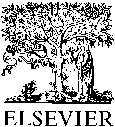p∣

International Food and Agribusiness
Management Review 3 (2000) 41-53
International Food
and. t
Agribusiness
Management Review
ISO 9000 —a marketing tool for U.S. agribusiness
Carlos Capmanya, Neal H. Hookerb,*, Teofilo Ozuna, Jr.c, Aad van Tilburgd
aMinistry of Agriculture, Costa Rica
bDepartment of Agricultural, Environmental and Development Economics, The Ohio State University,
Room 231 Ag. Admin. Bldg., 2120 Fyffe Road, Columbus, OH 43210-1067
cTexas A&M University
dUniversity of Wageningen
Abstract
The relevance of the ISO 9000 series of quality management systems (QMS) for U.S. agribusiness
is analyzed. Certified firms from several industries were surveyed to determine their before (ex ante)
and after (ex post) perspectives of the QMS. Results for the agribusiness subsample are compared to
those for firms from other industries to determine if they behave differently. Anticipated marketing
advantages (increasing market share and providing access to new markets) of the QMS were critical
factors that encouraged the pursuit of the certificate. The average cost to attain certification was
$101.400 and to maintain certification was an additional $26,500 per year. © 2001 Elsevier Science
Inc. All rights reserved.
1. Introduction
The ISO 9000 series of quality management systems (QMS) is rapidly becoming an
important component of the production and marketing plans of firms. The ISO 9000 series
is a group of three QMS (9001, 9002, and 9003) designed to provide a generic structure that
guides the quality policy, objectives, and responsibilities of a firm. An ISO 9000 certificate
is awarded by a registration company upon completion of a series of external audits of the
QMS. Thus, ISO 9000 provides an example of both a third party certification program and
an holistic QMS. Each of these elements is becoming increasingly important marketing tools
for agribusiness firms attempting to deliver quality-differentiated products in a consistent
manner.
Currently, the U.S. lags behind certain nations within trading blocs such as the European
Union (EU) in terms of adopting ISO 9000 standards as minimal evidence of quality
* Corresponding author.
1096-7508/00/$ - see front matter © 2001 Elsevier Science Inc. All rights reserved.
PII: S1096-7508(00)00027-6
More intriguing information
1. Three Strikes and You.re Out: Reply to Cooper and Willis2. The name is absent
3. Tissue Tracking Imaging for Identifying the Origin of Idiopathic Ventricular Arrhythmias: A New Role of Cardiac Ultrasound in Electrophysiology
4. The name is absent
5. Towards Teaching a Robot to Count Objects
6. The name is absent
7. Multi-Agent System Interaction in Integrated SCM
8. THE RISE OF RURAL-TO-RURAL LABOR MARKETS IN CHINA
9. Firm Closure, Financial Losses and the Consequences for an Entrepreneurial Restart
10. The name is absent